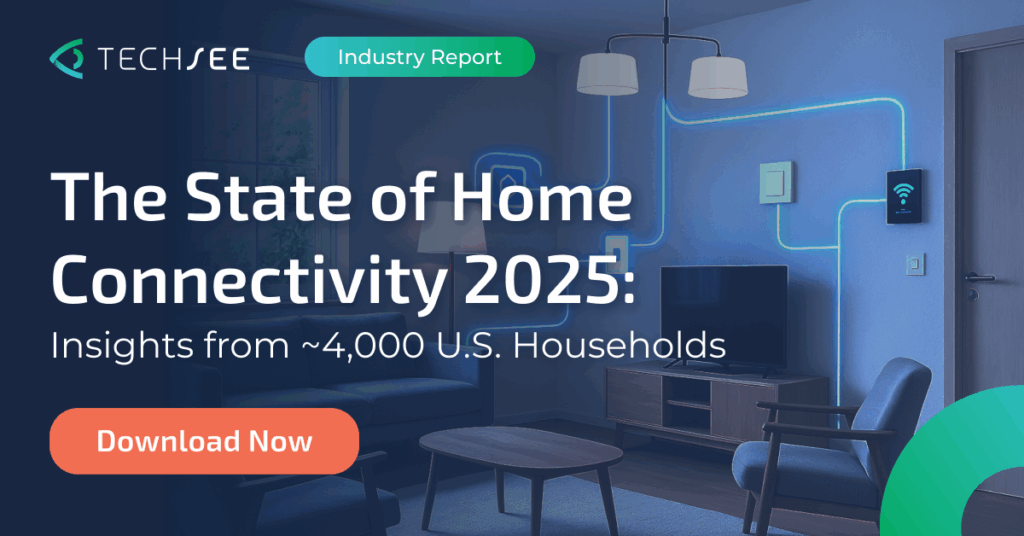Contents
Smart Home technology is expected to become a $151.4 billion market by 2024. However, it still has a long way to go before it reaches its full potential. Many consumers face significant technical challenges as they set about smartening up their homes. While in theory, smart devices should be easy to set up – most are wireless and can be remotely connected – in reality, non-technical customers are often insufficiently skilled to set up these products on their own. They need help – lots of it – and often more than can be realistically provided by the help desks of device suppliers. That’s why many vendors are turning to self-service options for effective Smart Home support.
Online troubleshooting wizards and how-to videos are both useful resources but they lack the interactive dimension that is at the core of effective self-service delivery. As the range and complexity of connected devices continue to multiply, new approaches are needed to support installation, setup, syncing and troubleshooting. Here are 4 key technologies – already widely used in other industries – that can help consumers enjoy independent, effortless, frustration-fee service and support.
Automated Device Discovery and Setup
Mike has unboxed his new smart TV and is excited to set it up. However, he is now required to follow several steps that rely on different protocols… smartphone app… Bluetooth… Wi-Fi… the steps are confusing and his level of frustration is mounting.
Implementing standard protocols such as Zigbee can simplify the user experience by automating the device discovery process. Auto-detect mechanisms can also eliminate several steps in the setup process, making it far simpler. Leading manufacturers are already making use of this technology. For example, Philips Hue lights can be connected without user intervention, and Amazon’s “Certified for Humans” program further simplifies setup by enabling Alexa to share Wi-Fi credentials automatically.
Indications of Connectivity Loss
Susan is late for work for the third time this week. She woke up to find her smart home offline, meaning her morning alarm didn’t go off, her room is still dark and there is no cup of coffee waiting for her.
Network-related issues are common causes of smart device malfunctions. When networks can keep track of which devices are generating traffic and analyze that data using Artificial Intelligence, loss of connectivity can be more easily detected, fixed and even prevented in the first place by automatically rebooting unresponsive devices or removing the flagged device from the network to isolate the issue.
Machine Learning Functions
Sean shakes off his umbrella and takes off his coat as he comes inside from a cold, blustery day. His Smart Home is warm and inviting and when he checks the daily log, he finds that his smart thermostat lost connectivity just after lunch but self-healed a few hours later. He would never have known.
For true auto-rectification – or self-healing – of network anomalies, AI and machine learning (ML) functions must be utilized. AI can identify anomalies caused by loss of connectivity and ML can uncover the most efficient recovery mechanisms and respond effectively when an outage occurs. These learning models can easily be applied in Smart Home routers. The best part is that this self-correction occurs in the background without any input from the user, who may not even notice that a device went down at some point during the day.
Computer Vision & Augmented Reality
Deb has just about given up on installing her new smart security system. Wires, cameras and other bits and bobs are strewn across her kitchen table. Deb calls Customer Service and is invited to a live visual self-service session. The Computer Vision-powered virtual assistant can see all the components of her new system and walks Deb through the entire installation process using on-screen Augmented Reality annotations to guide her every step of the way.
Remote visual support takes troubleshooting to the next level by allowing the contact center system to see the customer’s environment. Without the traditional back-and-forth of verbal guidance, it determines whether the source of the issue is related to assembly, connectivity, hardware, power supply, configuration or another cause and quickly guides the customer toward a resolution. If the user requires additional support from a human expert, the images captured during the session are transferred to the agent along with a full issue analysis, making it easier for the Smart home support rep to guide the user in real time.







